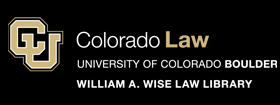Document Type
Article
Publication
Fordham Law Review
Year
2013
Citation Information
Kristen A. Carpenter and Eli Wald, Lawyering for Groups: The Case of American Indian Tribal Attorneys, 81 Fordham L. Rev. 3085 (2013), available at https://scholar.law.colorado.edu/faculty-articles/95.
Abstract
Lawyering for groups, broadly defined as the legal representation of a client who is not an individual, is a significant and booming phenomenon. Encompassing the representation of governments, corporations, institutions, peoples, classes, communities, and causes, lawyering for groups is what many, if not most, lawyers do. And yet, the dominant theory of law practice--the Standard Conception, with its principles of zealous advocacy, nonaccountability, and professional role-based morality--and the rules of professional conduct that codify it, continue to be premised on the basic antiquated assumption that the paradigmatic client-attorney relationship is between an individual client and an individual attorney. The result is a set of rules and a theory of law practice that often ill fit the practice of group lawyers.
This Article explores the theoretical and practical challenges of group lawyering through the study of lawyers for American Indian tribes. We believe that a focus on tribal lawyers furthers two important goals. First, the individualistic impulse of the dominant theory of law practice is so ingrained that it forecloses the possibility of challenging and imagining genuine group-based alternatives. In order to truly see the shortcomings of the Standard Conception and conceive of alternatives to it, one must start not with an abstract theory of group representation, but with a detailed study of the meaning, needs, interests, and realities of actual groups and build a corresponding theory from the ground up. Second, the story of tribal lawyers, an important narrative of both the legal profession and of tribes, is still largely untold. This Article thus aims to challenge the homogeneity of the Standard Conception of law practice and to begin the process of imagining group-based alternatives to it, while at the same time telling part of the story of tribal lawyers.
Copyright Statement
Copyright protected. Use of materials from this collection beyond the exceptions provided for in the Fair Use and Educational Use clauses of the U.S. Copyright Law may violate federal law. Permission to publish or reproduce is required.
Included in
Indigenous, Indian, and Aboriginal Law Commons, Legal Ethics and Professional Responsibility Commons, Legal Profession Commons


